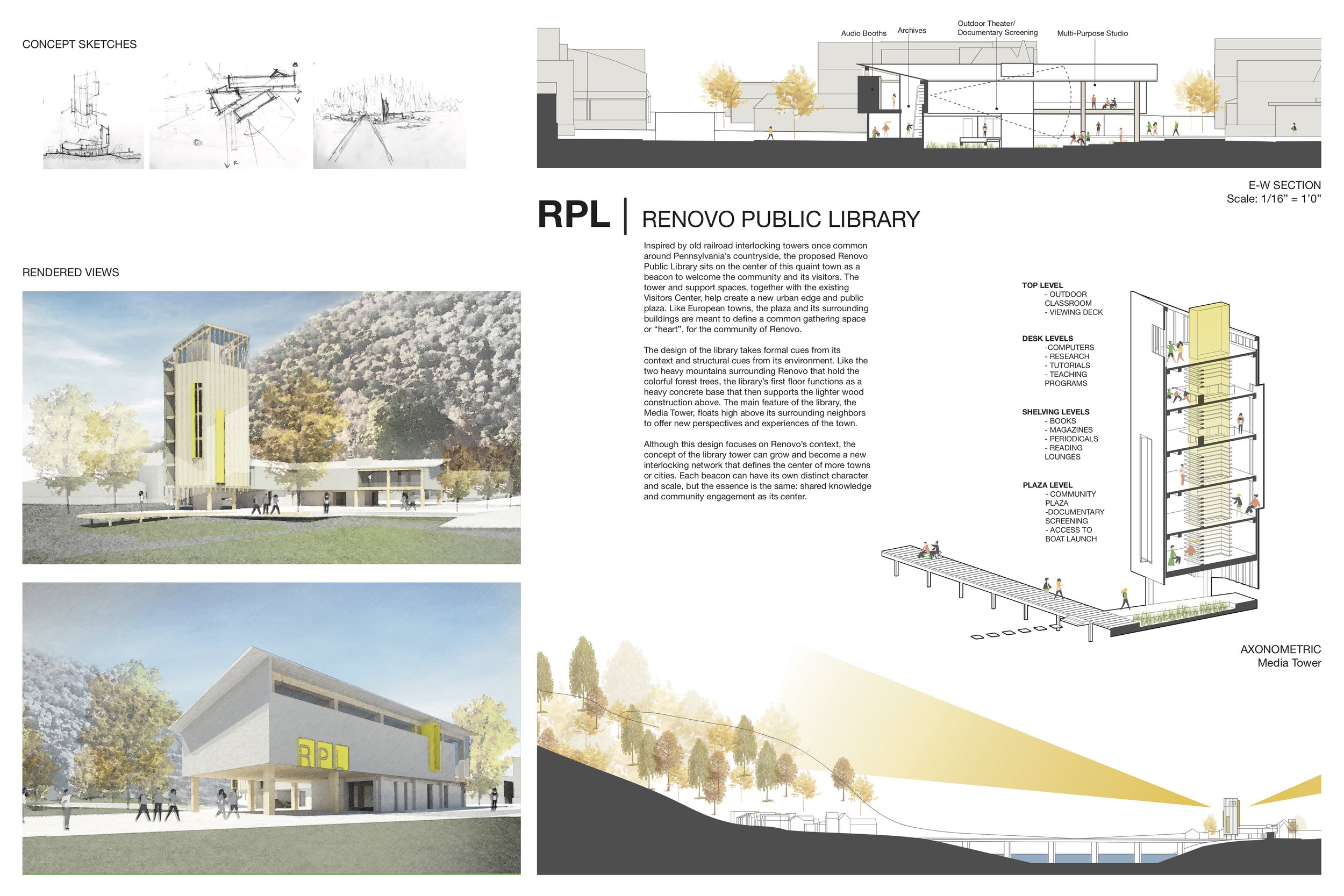

The School of Architecture is proud to announce that alumna Carolina Tamayo (B.Arch 2017) was recently announced as the winner of the 2019 John Stewardson Memorial Fellowship in Architecture, and Elizabeth Levy (B.Arch 2019) was named a top ten finalist. Carolina is the first winner from Carnegie Mellon School of Architecture since Brent Buck won in 2003.
The SoA’s Awards Committee, chaired by professors Gerard Damiani and Stefan Gruber, and SoA head Steve Lee nominated Carolina for participation in the competition on the basis of her outstanding academic record and high GPA in design courses. The Stewardson Fellowship is the oldest and most prestigious award for architecture students and graduates in Pennsylvania. The SoA congratulates Carolina on this outstanding accomplishment and demonstration of the school’s continued dedication to architectural design excellence.
The fellowship, created in memory of John Stewardson (1858-1896), is now in its 118th year. The winner receives a $10,000 prize to pursue the study of architecture in a foreign country(s) to promote their design discovery and growth. The award is open to students or recent alumni (within three years) pursuing a B.Arch or M.Arch degree from an accredited school of architecture in the Commonwealth of Pennsylvania. The top ten finalists’ project boards tour Pennsylvania schools of architecture as the Stewardson Exhibition in the months following the competition.
This year’s design competition, Ex/Libris. A New Prototype Library for Renovo, Pennsylvania, tasked participants with developing and interpreting the role of the library within 21st-century society. The brief specified a new prototypical institution, endowed by an anonymous donor, to be situated on a site in Renovo, Pennsylvania modeled after the community libraries paid for and championed by Andrew Carnegie. Renovo, like many post-industrial railroad towns of the western part of the state, begins to suggest that a central civic intervention can spark an urban renewal tantamount to the idealizations Carnegie proposed for his libraries. Participants were spurred to question and prod the utility of the library in the internet age, the presence of public libraries as the secular ‘sacred’ spaces of everyday life, and the possibilities that an architectural intervention, large or small, can have on the surrounding landscape and its people.
Carolina’s winning entry RPL (Renovo Public Library) demonstrates the ability of architecture to uplift and sustain the community around it. Of Carolina’s work, the jury commented: “The RPL sought to establish a civic gathering space at the water’s edge by employing an L-shaped parti coupled with a book tower. Its beacon-like qualities assembled a place in the community that, through its difference in scale and relativity of vernacular form, championed the coming-together of people in a new civic space. Particularly, the architecture’s relationship to the surrounding landscape and adjacent river re-orients the community vis-á-vis the building to the town center. The back-of-town site, newly activated by the tower of the library, finds a home for reactivation in a new public space at the base of the tower. Programmatically, the jury found that the mixture of spaces was successful in capturing the diverse demands that face the modern library.”
